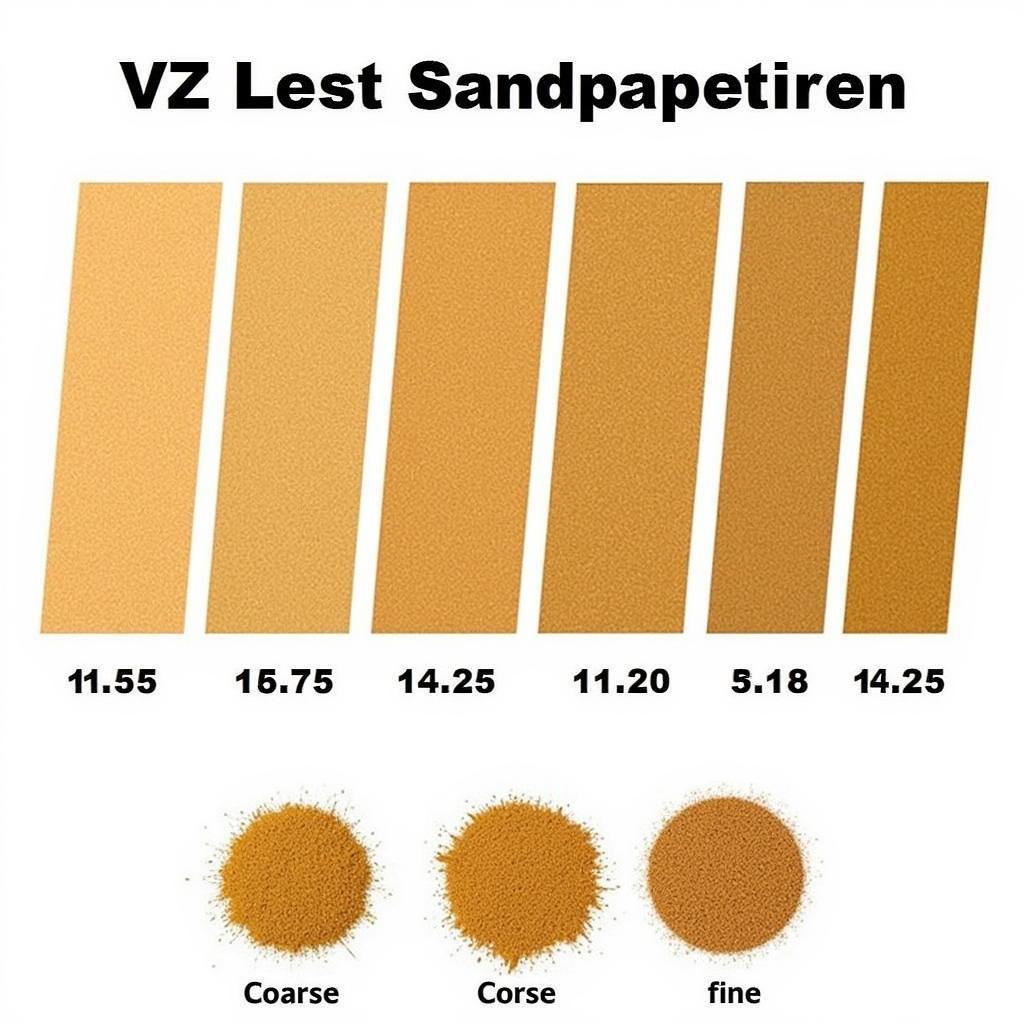
Sandpaper Grit Comparison Chart
Sandpaper For Car Paint Repair is an essential tool for achieving a professional, flawless finish. Whether you’re dealing with a minor scratch, a deep gouge, or prepping for a new paint job, understanding the different types of sandpaper and how to use them effectively is crucial.  Sandpaper Grit Comparison Chart
Sandpaper Grit Comparison Chart
Understanding Sandpaper Grits for Car Paint Repair
Choosing the right sandpaper grit is paramount for successful car paint repair. Using the wrong grit can lead to further damage, like deep scratches or an uneven surface. Sandpaper grit is measured by a number, with lower numbers indicating coarser sandpaper and higher numbers indicating finer sandpaper.
Grit Selection Guide
- Coarse Grits (40-80): Ideal for removing heavy rust, old paint, and leveling deep imperfections. Use with caution, as these grits can easily remove too much material.
- Medium Grits (100-180): Used for smoothing out the surface after using coarse grits and for removing minor scratches and imperfections.
- Fine Grits (220-320): Prepare the surface for priming and painting by removing fine scratches left by medium grits. These grits create a smooth finish.
- Very Fine Grits (400-600): Primarily used for wet sanding between coats of primer and paint to achieve a perfectly smooth and level surface.
- Ultra-Fine Grits (800-2500): Used for final polishing and buffing to remove any remaining imperfections and achieve a high-gloss finish.
How to Use Sandpaper for Car Paint Repair
Proper sanding technique is essential for achieving optimal results. car paint repair sandpaper Here’s a step-by-step guide:
- Clean the Area: Thoroughly wash and dry the area to be repaired.
- Start with Coarse Grit: If necessary, begin with a coarse grit to remove deep scratches or imperfections. Always work your way up to finer grits.
- Use a Sanding Block: A sanding block helps to distribute pressure evenly and prevents uneven sanding.
- Sand in Straight Lines: Sand in the direction of the scratch or imperfection. Avoid circular motions, as they can create swirl marks.
- Clean Between Grits: Remove any dust or debris between each grit change to prevent scratching.
- Wet Sanding: For finer grits, wet sanding provides a smoother finish and prevents clogging. Use a spray bottle filled with water to keep the surface lubricated.
- Feel the Surface: Regularly check the surface by running your hand over it to feel for any remaining imperfections.
Different Types of Sandpaper for Car Repair
There are various types of sandpaper available, each suited to different applications:
- Aluminum Oxide: A versatile and durable option for both dry and wet sanding.
- Silicon Carbide: Excellent for wet sanding and achieving a very smooth finish, particularly between coats of paint.
- Garnet: A natural abrasive suitable for sanding wood, but less commonly used for car paint repair.
how to repair deep scratch in car paint
“Choosing the right sandpaper is as crucial as the paint itself. Using the wrong grit can ruin the entire repair,” says John Davis, a seasoned auto body technician with over 20 years of experience.
Common Mistakes to Avoid
- Skipping Grits: Don’t skip grits in an attempt to save time. This will result in an uneven surface and a poor finish.
- Using Too Much Pressure: Applying excessive pressure can create deep scratches and damage the surrounding paint. Let the sandpaper do the work.
- Sanding in Circular Motions: Circular sanding can leave swirl marks that are difficult to remove.
how to repair car paint flaking
“Patience is key when sanding car paint. Take your time and work through the grits systematically to achieve the best results,” advises Sarah Miller, an automotive paint specialist.
Conclusion
Sandpaper for car paint repair is a fundamental tool for achieving a professional-looking finish. Understanding the different grits and using the proper technique will ensure a smooth, even surface ready for priming and painting. By following this guide and avoiding common mistakes, you can confidently tackle your next car paint repair project. repair chipped paint on car uk
Need support? Contact us via WhatsApp: +1(641)206-8880, or Email: [email protected]. Our customer service team is available 24/7.
